Muzzle training for your dog
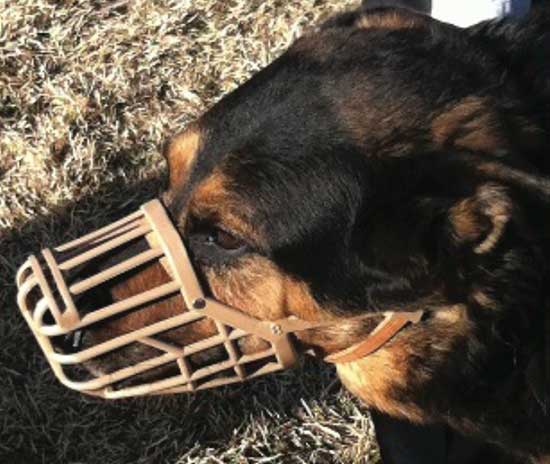 There was a time when muzzles were considered the sign of a dangerous dog. Fitting a muzzle was a last resort for owners who could not trust their dog not to attack other dogs and/or people. Although muzzles are much more widely used these days for many and various reasons other than aggression, owners are often reluctant to use a muzzle as they feel that it will stigmatize them and their dog. However, muzzles can be useful in many ways and their use shouldn't be discounted.
There was a time when muzzles were considered the sign of a dangerous dog. Fitting a muzzle was a last resort for owners who could not trust their dog not to attack other dogs and/or people. Although muzzles are much more widely used these days for many and various reasons other than aggression, owners are often reluctant to use a muzzle as they feel that it will stigmatize them and their dog. However, muzzles can be useful in many ways and their use shouldn't be discounted.
People generally are more willing to put time and effort into training their dog than they were in the past, and dogs are now, on the whole, sociable and acceptable canine members of our society. These days, UK legislation is much stricter and the penalties for dog owners so much harsher, so sometimes the use of a muzzle is a sensible and safe option. As a positive aid to dog training they allow owners to be more relaxed in the knowledge that, even if they lose control of their dog's behaviour, there may be no significant consequences. A muzzle can also be used to control a dog's habit of eating faeces (coprophagia) whilst out on walks. With the increased incidences of poison being maliciously laid to kill or harm dogs, a muzzle can be an invaluable tool to safeguard dogs who scavenge for food whilst out walking. They can be especially useful to groomers and vets who are handling dogs at close quarters in situations where the dog may be uncomfortable or even stressed.
Bark Busters recommends a basket muzzle, either leather or vinyl, where possible. For dogs who show aggression or who scavenge whilst out on walks, a basket muzzle would be the most appropriate.
We do not recommend a steel muzzle as these are too dangerous and could hurt another dog or person. We also do not recommend a muzzle that encloses the dog's snout or mouth as these can restrict panting or drinking. These can be dangerous for dogs because a dog needs to be able to pant and drink through the muzzle.
Most dogs can be trained to wear a muzzle, and there is an argument that all puppies and young dogs should be introduced to a muzzle in case a situation ever arises where one becomes necessary – for example if a dog becomes stressed at the vets or at the groomers, or if a dog starts to show aggression in certain situations, due to fear. As with anything that we want to introduce to our dogs, planning is required. Be patient and consistent when introducing the dog to the muzzle to ensure that the muzzle has positive associations for your dog. The training should be undertaken over the course of a few days to enable your dog to become accustomed to having the muzzle near his face.
When training your dog to wear a muzzle, the whole experience needs to be pleasant and unthreatening. Don't rush the process. Your voice tones should be soft and happy and lots of praise given at every stage. It's also important to ensure that the muzzle you select fits your dog comfortably, as any pain will create a bad association and reverse any good work you have done.
Some people will introduce the idea of a cone to a dog before presenting the muzzle. This is a way of training a dog to put his nose into something that you are holding, without being worried about doing so. Every time your dog puts his nose into the cone he gets a treat reward and praise. This encourages your dog to want to insert his nose into items that you are holding for him, knowing that there will be a reward. You can change the items as you progress, for example, from a cone, to a child's bucket, to a mug, and eventually to the muzzle itself.
Others will go directly to the muzzle training. In either case, the following steps will help you to accustom your dog to wearing a muzzle:
Step 1
When first introducing the muzzle, allow him to place his nose inside without pressure from you. Don't try to fasten the muzzle at this stage. Begin by placing a dry treat inside the muzzle. Allow him to put his nose inside the muzzle, retrieve the treat, and withdraw his nose. Repeat this several times, moving the muzzle away from him so that he begins to follow the muzzle to retrieve the treat. Praise when his nose is in the muzzle, and remain silent whist the muzzle is off. This will help him to associate the muzzle with good attention.
Stage 2
Introduce treats into the muzzle that take a little longer to chew, or you could use a doggy paste that needs to be licked. The aim here is to enable you to hold the muzzle up to his nose for a longer period. Always praise when the muzzle is over his nose.
Practise this stage for a few days, two to three times per day for around 3 or 4 minutes each time. Once your dog is comfortable with you bringing out the muzzle, and happily puts his nose inside to eat from it, you are ready to progress to the next stage.
Stage 3
Practise feeding treats through the holes in the basket, still without fastening the muzzle around your dog's neck. Make sure you get it right so that your dog can eat the treats posted through the holes before you proceed onto the next stage.
Stage 4
Here we begin to attempt to fasten the muzzle onto your dog's head. Make sure you are armed with approximately 20 high value treats. Things like strips of chicken or small pieces of sausage work well. Place one treat into the muzzle, allow your dog to start chewing the treat and then fasten the strap of the muzzle. Immediately start feeding your high-value treats through the side holes, as you practised in stage 3. As you feed the treats, keep praising your dog. Once all treats are eaten, unstrap the muzzle and cease the praise.
Stage 4 should be repeated for a couple of days, extending the period of time that the muzzle is worn, until your dog can tolerate the muzzle for around 30 minutes. Don't worry if this takes longer than a couple of days for your dog. All dogs are different, and will accept things at different speeds. The important thing is that your dog ends up comfortable with the muzzle over his face. A good sign would be that he wags his tail happily when he sees the muzzle come out.
Keep up the good work by introducing the muzzle when your dog is doing something he enjoys. You may want to continue introducing treats occasionally, and always maintain the praise. If your dog seems to regress in his acceptance of the muzzle, don't get angry or frustrated, simply go back a couple of steps and start again from there.
You can teach your dog to drink water when wearing a basket muzzle by filling his bowl to at least 3 inches. Take him over to the bowl and waggle your fingers in the water, or scoop some water up to encourage him to drink.
If you are at all unsure about your dog's behaviour, muzzle training is a very good idea. An owner who is anxious and worried about what may happen when out on walks will be sending those stress signals down the lead to the dog. With the properly-fitted muzzle in place your dog cannot inflict any major damage onto other dogs or people, and you can therefore be more relaxed. A relaxed owner is more likely to be walking a relaxed dog – a situation that is healthier and happier for both.

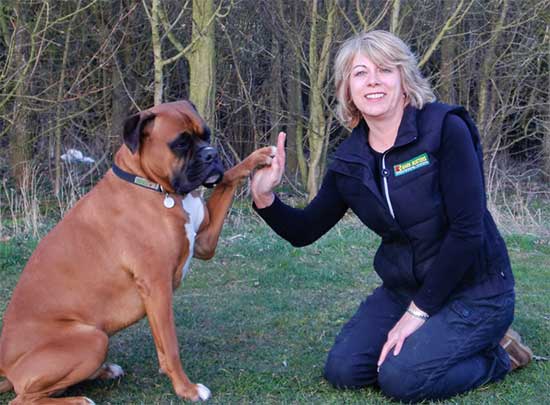 Since you are reading this, you are probably someone who likes dogs! You are certainly not alone.
Since you are reading this, you are probably someone who likes dogs! You are certainly not alone. 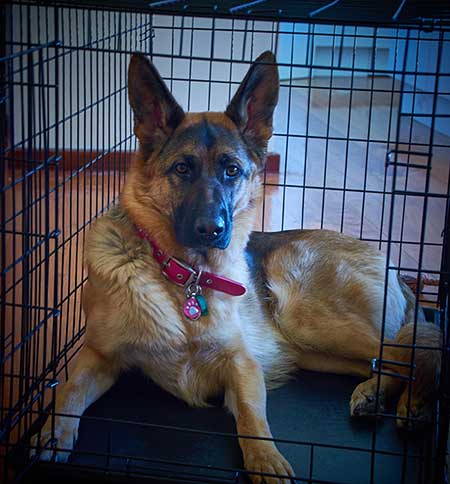 In a recent article, we discussed how to meet your dog’s needs. One of a dog’s needs is for shelter, its own space or den. We know that, in the UK, most dogs live indoors with their human family and so they do have shelter from the extremes of heat or cold, or from wet weather. Having your dog living indoors also means that they are part of your family unit and addresses their fundamental need to be part of a pack.
In a recent article, we discussed how to meet your dog’s needs. One of a dog’s needs is for shelter, its own space or den. We know that, in the UK, most dogs live indoors with their human family and so they do have shelter from the extremes of heat or cold, or from wet weather. Having your dog living indoors also means that they are part of your family unit and addresses their fundamental need to be part of a pack.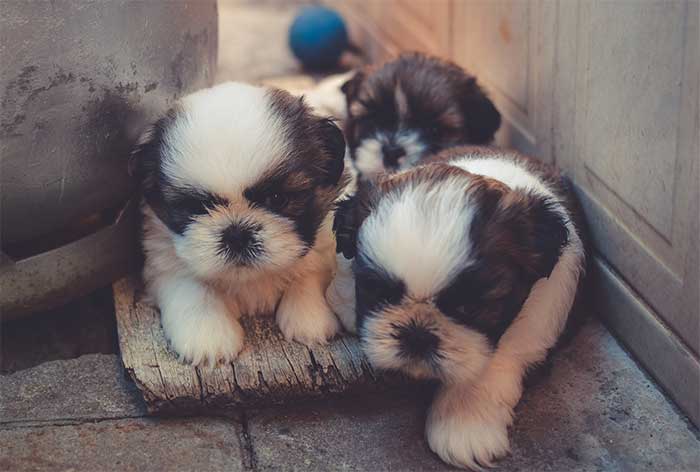 As Bark Busters dog trainers, we find that the New Year is a busy time for puppy training. If you are thinking of getting a puppy it is worth taking time to think about and prepare yourself for what you are taking on, and to make sure that the puppy you buy is right for you and your family. Having the right dog, properly trained, will bring you joy for years to come.
As Bark Busters dog trainers, we find that the New Year is a busy time for puppy training. If you are thinking of getting a puppy it is worth taking time to think about and prepare yourself for what you are taking on, and to make sure that the puppy you buy is right for you and your family. Having the right dog, properly trained, will bring you joy for years to come.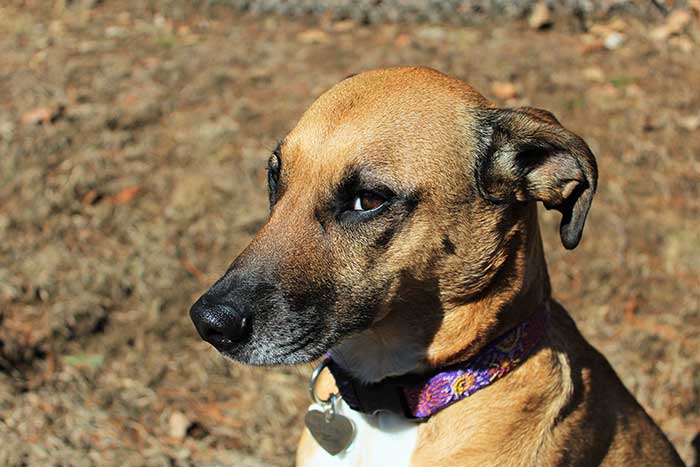 If you have decided that you want a dog, it is often a good idea to consider rehoming a dog from one of the many rescue centres around the UK. There are lots of lovely dogs who find themselves at rescue centres through no fault of their own. They just want a home and will very often prove to be loving and loyal lifelong companions to their new owners. Many dogs find kennel life stressful so offering a new home to such a dog is an act that benefits both you and the dog you choose to adopt.
If you have decided that you want a dog, it is often a good idea to consider rehoming a dog from one of the many rescue centres around the UK. There are lots of lovely dogs who find themselves at rescue centres through no fault of their own. They just want a home and will very often prove to be loving and loyal lifelong companions to their new owners. Many dogs find kennel life stressful so offering a new home to such a dog is an act that benefits both you and the dog you choose to adopt.